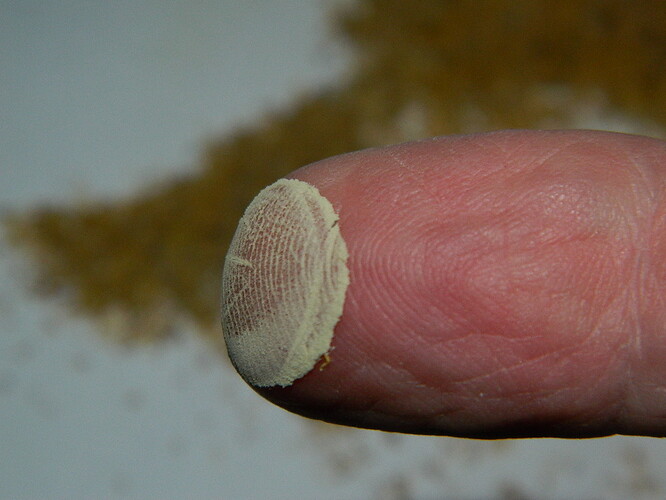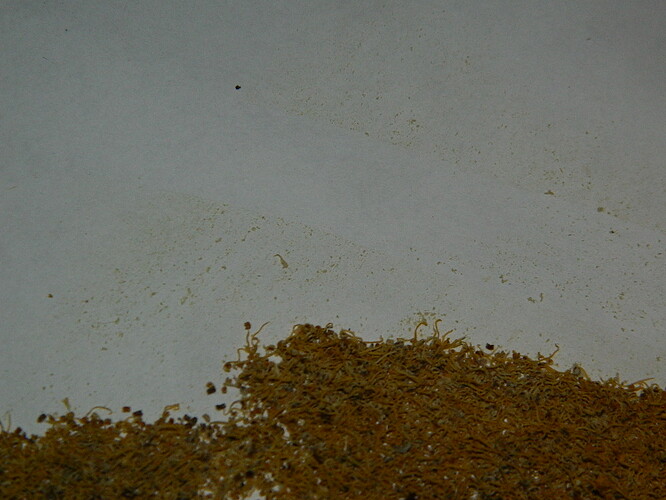You would want to leave the silica gel in the protective bags. It can be dried out and reused and you definitely do NOT want to inhale any of the dust.
It depends on whether I have a lot of anthers or not. If I have a lot I just pour some beads directly into the container. Yes they do kind of adhere but if there’s ample pollen it doesn’t really matter.
If anthers are scarce, or for whatever reason I want every possible grain of pollen, then I leave the pollen jar’s lid open, with the beads next to the jar, all in a closed Tupperware type container.
The great thing is the beads are reusable, just pop them in the microwave for a minute or two and they’re good as new.
Edit after my post crossed with Roseseek’s:
There should be no dust with the beads (as opposed to crystals). Another benefit is the beads change color so you know when they get too moist to be useful.
I concur with you about temperature being critical. I have learned to only pollinate when bumble bees are active. They must know when the flowers are ready. I know this is rather unscientific but it seems to work. You see I am in the north.
It is curious for me to hear that plants like ‘Hansa’ are hard to breed. Johannes
They’ve all evolved together so those stimulated into action at the appropriate temperatures succeed.
That was the theory
-except too small of a population.
Hello roseseek - apologies, I missed this post in May. Would you please say in what way you intend to use the Banksiae pollen? I understood that Banksia rose pollen is particularly shy about collection and fertilisation (How did you do it?! What do the hips look like - I had tried searching for images) Do you know whether the thornlessness can be passed on? (perhaps this is more suited to a new topic?). Thanking you
Hi Pavlovais, I harvest MANY, I mean MANY Banksiae flowers and allow the gathered anthers and stamen to dry on a sheet of paper in the formal living and dining rooms which we seldom use. Nothing “molests” them so they remain drying without being disturbed. There is actually quite a bit of pollen material released from them over time. I allow them to remain all season (the temps remain in the low to mid 60 F range with moderate humidity) and use it as blooms I wish to use it with appear. Here, you can see the pollen (it appears dusty on the paper); pollen on my finger tip and where I swiped my finger through it on the paper. The hips appear normal for the various pollen parents I’ve used. Lack of prickles appears to be transmitted as is an EXTREME addiction to mildew and weak growth. But, I keep pushing!
So many anthers! I tried to do an experiment where I did similar to you but with the silica beads. The pollen did stay golden and good for an additional 5 days but sadly it spoiled in the end turning grey and dust like… I am so jealous you can collect this much out in the open! I guess it’s just too humid here… Or it’s the rose variety…
It’s likely the humidity there. We’re nine miles from the Pacific and nights are drippy wet due to the fogs and marine layer but the ocean breezes hit daily and it gets DRY. Plants dry out daily, even heavily watered potted plants in “moisture control” soil. I keep the drying material all year and finally dump it when I’m finished pollinating, which is sometimes nearly a year. It’s an odd and lovely climate.
I mean I can’t complain about where I live, I can grow such a wide range of plants compared to most of the world. I just can’t keep pollen out of the freezer!
Very helpful, thankyou Roseseek. I am now hoping my impulse buy might bear fruit after all! I will leave a thermometer in the downstair garage this season and check whether temps stay reliably in the suitable range - the Australian summer following the spring bloom will likely be the challenge, temperature wise.
You’re welcome, I hope it helps!



